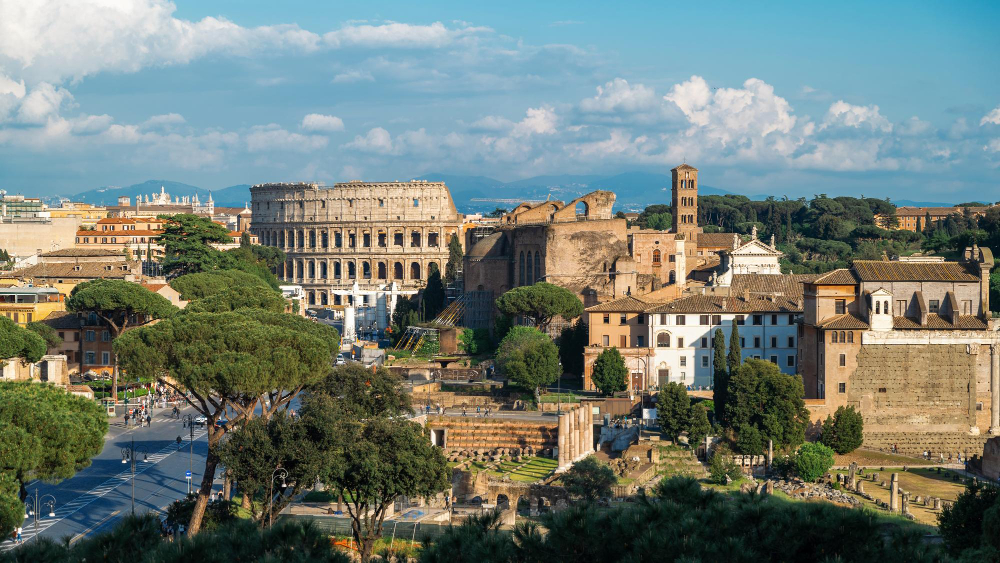In a world where mega-cities dominate the urban landscape, the allure of smaller cities lies in their intimate communities and distinct narratives. This exploration takes us on a journey to discover the ten smallest cities globally, each with its unique charm. From the spiritual enclave of Vatican City to the glamour of Monaco, the historical richness of San Marino to the serene islands of Tuvalu, and the Adriatic magic of Rovinj in Croatia, these cities defy conventional expectations. Join us in unraveling the stories of these compact urban gems.
Must Read: Traveling to Europe from the US in 2024: Embarking on Transatlantic Adventure
Here’s the list of Top 10 Smallest Cities in the World
1. Vatican City, Vatican City State:
Nestled within Rome, Vatican City stands as the world’s smallest independent city-state, covering a mere 44 hectares. Despite its size, it holds immense significance for the Roman Catholic Church and millions of worshippers worldwide.
2. Monaco, Monaco:
Perched on the French Riviera, the Principality of Monaco, with an area just over two square kilometers, is synonymous with luxury and the iconic Monte Carlo Casino. Opulence thrives in this compact gem.
3. Nauru, Yaren District:
Nauru, the third smallest country globally, houses its capital, Yaren, within an area of 21 square kilometers. This Pacific island nation may be small, but its warm climate and vibrant culture make it noteworthy.
4. San Marino, San Marino:
On the slopes of Mount Titano, the Republic of San Marino is one of the world’s oldest republics. San Marino, covering about 7.5 square kilometers, offers panoramic views and a captivating blend of history and tradition.
5. Tuvalu, Funafuti:
Funafuti, the capital of Tuvalu, situated on the Funafuti Atoll, covers an area of approximately 2.9 square kilometers. Surrounded by the vast Pacific, Tuvalu’s capital encapsulates the serene beauty of island life.
6. Adamstown, Pitcairn Islands:
As the only settlement on the Pitcairn Islands, Adamstown is one of the world’s smallest and most remote capitals. With a population under 50, it’s an isolated haven in the vastness of the Pacific.
7. St. Peter Port, Guernsey:
The largest town on Guernsey, St. Peter Port, with an area of about 6.1 square kilometers, marries historical charm with picturesque landscapes, showcasing the beauty of the Channel Islands.
8. Saint Helier, Jersey:
The capital of Jersey, Saint Helier, covering around 10 square kilometers, is a vibrant blend of modernity and history. Its waterfront and shopping districts add a contemporary touch to the island’s charm.
9. Victoria, Seychelles:
Nestled on Mahé, the largest island in Seychelles, Victoria serves as its capital. With a modest area of approximately 20 square kilometers, this city boasts a vibrant market, colonial architecture, and the stunning backdrop of lush hills.
10. Rovinj, Croatia:
Adding a touch of Adriatic magic to our exploration, Rovinj stands as one of Croatia’s gems. Situated on the Istrian Peninsula, this coastal town captivates with its charming old town, colorful buildings, and panoramic views of the Adriatic Sea. Covering around 7 square kilometers, Rovinj merges history, culture, and natural beauty seamlessly.
Top 10 FAQs about Small Cities:
Q1: What defines the smallest city?
A1: The size of a city is often determined by its land area or population. In this list, we consider cities with compact land areas.
Q2: Why are these cities considered significant?
A2: Despite their size, these cities often hold cultural, historical, or economic significance, contributing to their respective regions or countries.
Q3: How do these cities differ from larger ones in terms of lifestyle?
A3: Smaller cities often offer a more close-knit community feel, with a slower pace of life and a focus on preserving local traditions.
Q4: Are there unique challenges in governing small cities?
A4: Yes, governing small cities comes with its own set of challenges, including resource allocation, infrastructure development, and maintaining economic sustainability.
Q5: Can small cities compete with larger ones in terms of tourism and economy?
A5: Yes, small cities often attract tourists seeking unique experiences and can contribute significantly to their country’s economy through tourism and specialized industries.
Q6: How do these cities preserve their cultural heritage?
A6: Many small cities actively work to preserve their cultural heritage by implementing conservation measures, promoting local arts, and maintaining historical sites.
Q7: Are there notable events or festivals in these small cities?
A7: Yes, many small cities host unique events and festivals that celebrate local traditions, attracting visitors from around the world.
Q8: What role does geography play in the charm of these cities?
A8: Geography contributes significantly, with many small cities located in picturesque settings, such as coastal areas, islands, or amidst scenic landscapes.
Q9: Are there limitations to urban development in these cities?
A9: Yes, limited space can pose challenges for urban development, prompting a focus on sustainable and thoughtful city planning.
Q10: How can small cities thrive in the modern era of globalization?
A10: By leveraging their unique qualities, small cities can thrive through niche tourism, local craftsmanship, and embracing sustainable practices to attract a global audience.
Must Read: European Escapes: Unveiling the Best Weekend Getaways for Unforgettable Retreats
Conclusion:
In the mosaic of our global exploration, these ten smallest cities stand as testaments to the diversity and resilience of human settlements. From the spiritual enclave of Vatican City to the coastal allure of Rovinj in Croatia, each city narrates a unique story shaped by its history, geography, and community. Despite their modest sizes, these cities shine as beacons of culture, heritage, and distinct charm, proving that significance is not always measured in square kilometers but in the richness of experience they offer. As we celebrate the grandeur of smallness, may these cities continue to thrive as hidden gems in our vast world.
Must Read: Escape the Cold: Discover Visa-Free Destinations for a Warm Winter Get
